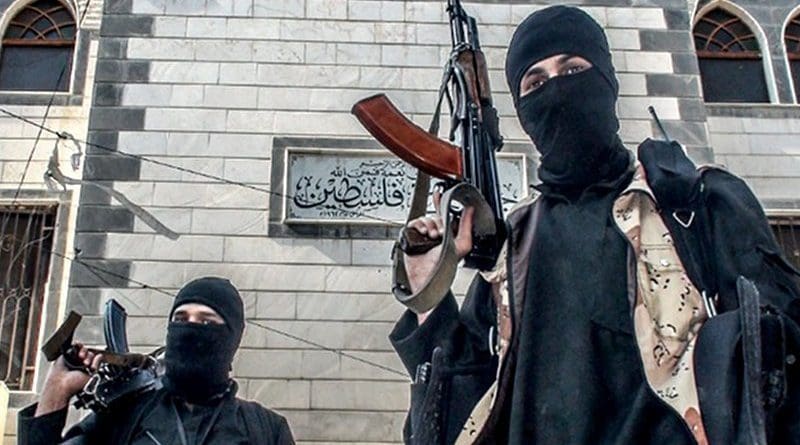Yasar Yakis

The ongoing Gaza crisis has added fuel to the Middle Eastern fire and the prospects are not bright for an early end. Israel bids higher than it can afford. It relies on American support, but there are limits and the American public may, at some stage, say that enough is enough.
The international community has done little to stop the clashes between the Palestinians and Israel. Middle Eastern countries, including Turkiye, have been generous in giving advice but reserved in extending concrete support to the Palestinians.
The US has not deviated from its blind support for Israel, both in UN forums and by sending to the Middle East its two most powerful aircraft carriers, USS Gerald R. Ford and USS Dwight D. Eisenhower. There are many other American battleships in the region, with at least seven in the Eastern Mediterranean and 12 in the Red Sea and Arabian Gulf.
The US warships have so far shot down 38 drones. Fourteen of them were heading toward Israel. When there are that many battleships in a region, there may be accidental clashes as well.
There is now a new phenomenon. Daesh, which had stayed largely dormant for a while, has now started to raise its head in various places around the world, beginning with the Middle East, but also in sub-Saharan Africa and Central Asia.
The region is far from being cleared of the remnants of Daesh. On the contrary, an increase has been noticed in its activities in many places. The US does not seem to be discontent with its activities. On the contrary, it uses Daesh’s activities as an excuse to keep its military presence in Syria and Iraq. Washington believes that its forces are necessary to keep a check on the activities of this terrorist organization.
Iraqi President Mohammed Shia Al-Sudani has announced that a commission will be set up to put an end to the Global Coalition Against Daesh in Iraq because the group has ceased to constitute a threat to Iraqi security. Therefore, there is no need to keep the US forces in Iraq. A similar attitude has been adopted by Syria, as Daesh has been cornered in the northwestern province of Idlib, fighting for its survival. Iran is even more opposed to Daesh because the Shiite regime in Tehran is in an ideological fight against the group.
Daesh’s activities in Turkiye have followed a different path. Ankara has been able to penetrate several Daesh cells. When the terror organization decided to restructure its format, it reduced its “Turkiye Province” to battalion level and attached it to Daesh-Khorasan Province, which stretches over Afghanistan, Iran and Turkmenistan.
The archives of the Turkish province of Daesh were decoded in Syria in 2021 and Kasim Guler, a Turkish citizen and the leader of the Syrian branch of Daesh, was arrested in April of that year. While in court, he provided a mountain of information about Daesh. At the same time, an organization that was providing support to the families of Daesh martyrs and prisoners was disbanded.
It is unclear whether there is a correlation between the Al-Aqsa Flood operation and the increased Daesh activities in Turkiye. The preliminary signs indicate that the Turkish security forces have gained the upper hand over Daesh terrorists in the country. If this trend continues, Daesh’s efficiency may further diminish there.
In the early 2010s, the Turkish government was doing everything it could to weaken the Syrian government. In 2015, a group of conservatives organized a public prayer in a meadow near Istanbul and praised radicalism in front of the television cameras. At that time, Turkiye was regarded as a motorway to Syria for those Daesh fighters who came from various parts of the world. In most cases, they landed in Istanbul, were hosted for a few days in this city by Turks who were part of the terrorist organization, then escorted on a 1,100-km journey to Antakya at the Syrian border and helped to cross in cooperation with Syrian opposition fighters.
At that time, many Turkish and foreign correspondents published interviews with these Daesh adherents. There was a widespread perception that many Turkish citizens were in touch with Daesh fighters one way or another. Several dormant Daesh cells were discovered even after the Turkish security authorities started to tighten their measures.
In later years, when the Turkish authorities became aware of the importance of the threat, they took significant measures. They detained more than 20,000 suspected Daesh members and 6,000 of them were convicted. At present, there are 1,154 Daesh members in various Turkish prisons. Many others have been expelled from Turkiye.
A new category of terrorists now seems to have been added. In the past, most Daesh extremists were Turkish citizens recruited in Turkiye, with only a few exceptions from abroad. Now, they are recruited abroad and brought to Turkiye, kept undercover and, when the day comes, asked to commit to the task they have been assigned.
Two weeks ago, one such act of terror was organized in the Santa Maria Catholic Church in Istanbul. One person was killed and the perpetrators were arrested soon after. Of all nationalities, the perpetrators turned out to be a Russian and a Tajik. They entered Turkiye legally and their residence permits were valid. The car that they used in the attack was registered in Poland. It was used by another person a week earlier. All this indicates that there were several people involved in the incident.
No comments:
Post a Comment